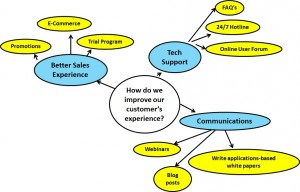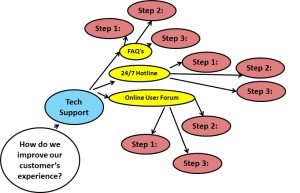Time. You never seem to have enough of it and it is the great equalizer of companies of any size whether they realize it or not. In a startup, you have a limited amount of time to get everything done so that you have a strong product launch before your funds run out and your investors are on to the next thing. In a larger company, time is just as crucial but the consequences of wasting it are less apparent. Without a sense of urgency, established companies can slowly sink into mediocrity after weak or failed product launches, poor BD and other important growth enhancing activities.
The biggest time waster of all at any size company is the useless meeting
Startups will become established companies so establishing a sane and productive meeting policy at the beginning will save you from this death by a thousand cuts (meetings).
If you are looking to drive success at your company, here are some things you can do to assess the effectiveness of your current meetings:
- Do the math: How many people attended the meeting (N) x average hourly salary (S) x length of meeting in hours (H) = $ cost of the meeting (N x S x H). For example: A meeting of 5 people for one hour would cost you $500 if the average salary rate were $100 /Hr. Was this meeting worth it?
Use this calculation to help eliminate useless meetings from your schedule and to negotiate yourself out of them with your supervisors if possible (sometimes this discussion can lead to the transformation of a useless meeting into a useful one).
- Establish a policy of providing a meeting agenda with each invitation: – This simple step helps to reinforce the policy of hosting only purposeful meetings. This discipline also has the beneficial effect of reducing the number of meetings in total as well. Having difficulty preparing an agenda for a meeting is the first sign that it might not be important enough to schedule.
- Less is more: When conducting a meeting where decisions are needed – think, what are the fewest number of people we need to invite – then communicate to the rest of the team. The more people that are in the room, the more opinions there will be and ultimately the more difficulty there will be to come to some consensus. When key decisions are being made, feedback from a broader set of people and other important inputs should have been conducted earlier to provide the information that the final team needs to make a good and timely decision.
- Watch behavior: How many people are checking their cell phones, tablets or laptops during the meeting? Did those people really need to be there? A meeting that holds true value for the participants will also hold their attention. If what you or others are doing on your computer during a meeting is more important than the meeting, perhaps you should have sent your regrets instead. This behavior can also be a good indication that it is time to wrap things up (Not every meeting needs to occupy the entire time scheduled to it).
- Watch your own behavior: Finding yourself wanting to check your messages or put the final touches on your presentation might be signs that you are not spending your time appropriately. You should be working on those things with all of your brain rather than attending this meeting.
Take home message
You can’t create time but you can prevent it from being wasted by establishing a meeting and communications policy that makes the most efficient use of everyone’s time. If you are at an established company, use these tips to boost your own and your team’s productivity. If you are at a startup, use these insights to make sure that you are getting every bit of value out of everyone’s time and effort as well as to establish the culture and habits that will keep your organization lean and mean as the company successfully grows.
Picture Credit: JD Hancock via photopin cc






